Get in touch
Want to know more?
Contact me to schedule a live demo with further details of my work and download my resume by clicking on the button below.
Download my ResumeCollabera Inc. engaged in a transformative partnership with United Airlines, focusing on enhancing the baggage journey for air travelers. As a UX Designer within Collabera Inc., my role involved gaining a comprehensive understanding of the end-to-end baggage journey, including all potential scenarios related to mishandled baggage.
The partnership aimed to identify pain points and propose actionable areas for improvement. This case study outlines the collaborative discovery process, involving subject matter experts and shadowing United Airlines employees at the airport and call center.
Senior UX Designer
Nov,2021 - Mar, 2022
Dallas, TX
Conducted extensive interviews with subject matter experts on the business side of United Airlines to understand existing processes, challenges, and business goals related to baggage handling.
Spent immersive time shadowing United Airlines employees both at the airport and at the call center. This hands-on approach allowed for a deep dive into day-to-day operations, interactions, and response procedures for mishandled baggage incidents.
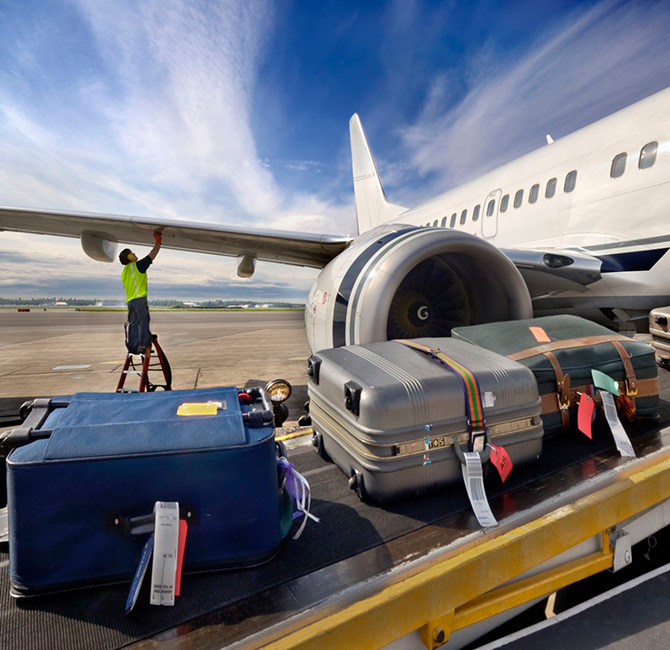
Observed operational bottlenecks at various stages of the baggage journey, leading to delays and inefficiencies in baggage handling.
Identified communication gaps between airport staff and call center representatives, hindering the seamless resolution of mishandled baggage incidents.
Noticed information silos between different departments within United Airlines, impacting the ability to provide consistent and accurate updates to passengers.
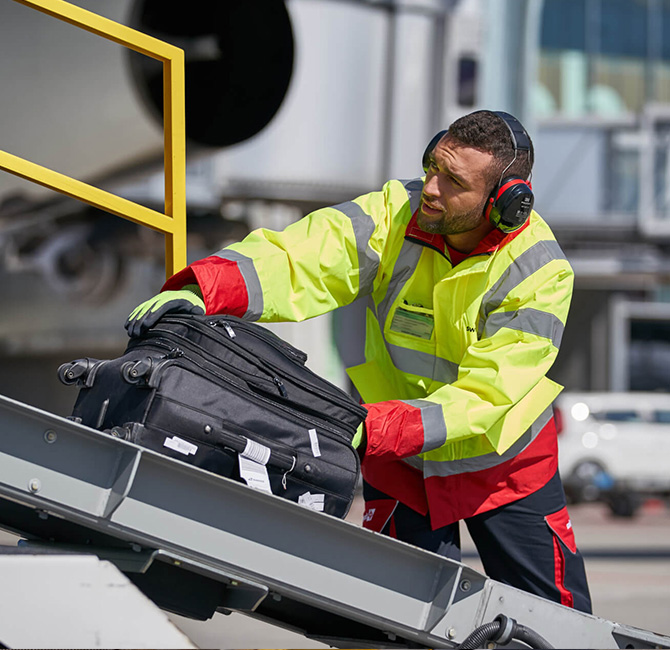
Developed comprehensive journey maps to visually represent the entire baggage journey from check-in to baggage claim. These maps served as a valuable tool to identify key touchpoints, pain areas, and potential opportunities for improvement. The journey maps provided a holistic view of the user experience, allowing stakeholders to understand the end-to-end process and its complexities.
Created detailed personas representing different user profiles within the baggage journey. These personas were based on insights gathered from interviews and shadowing, ensuring a nuanced understanding of the diverse needs, expectations, and pain points of various user segments. Personas served as a reference point throughout the design process, ensuring that proposed solutions catered to the specific requirements of different user groups.
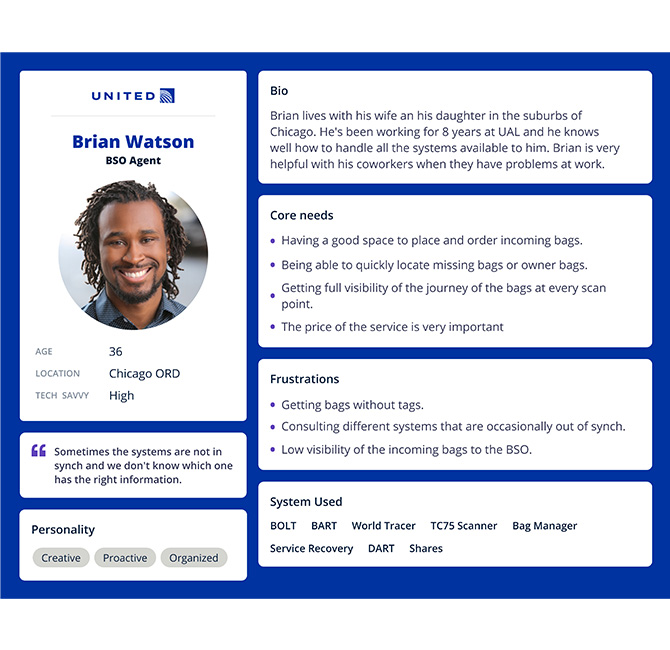
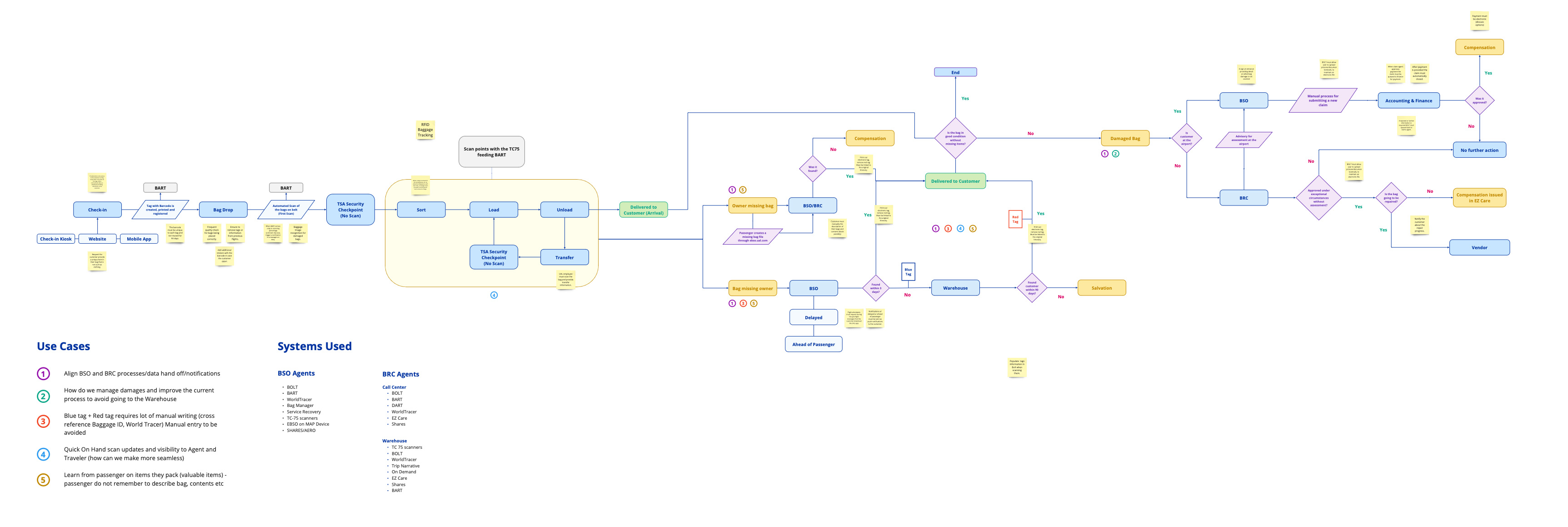
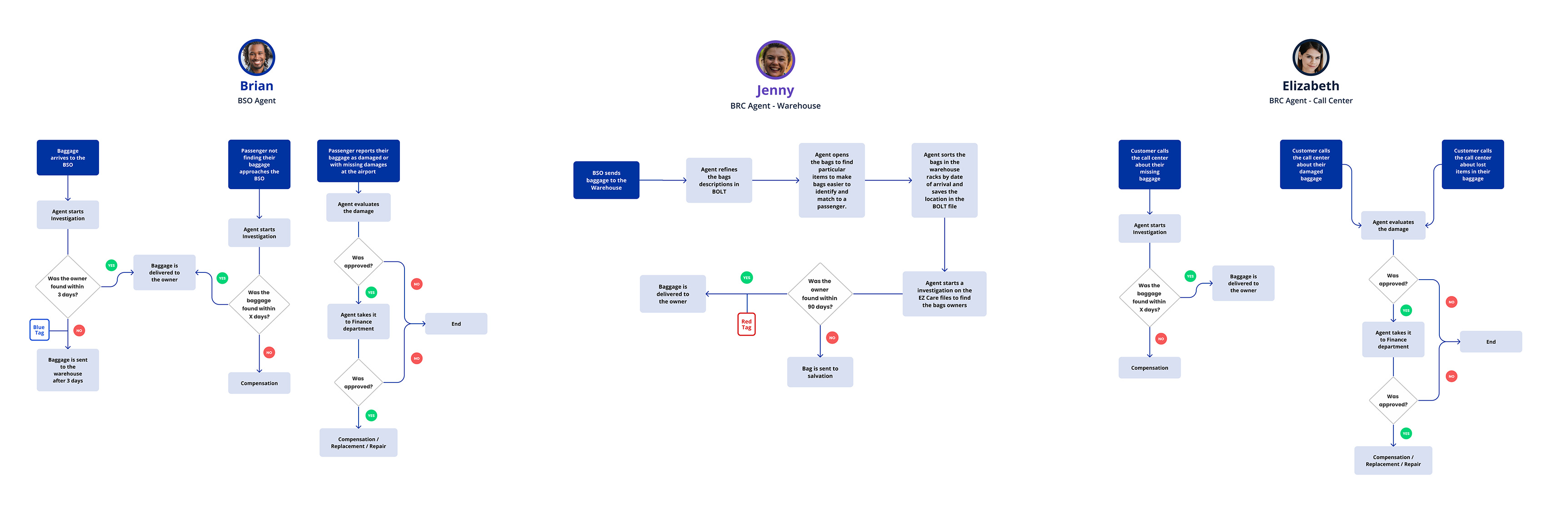
Developed detailed user flows to illustrate the step-by-step paths users would take within the proposed solutions. User flows mapped out the sequences of actions, decisions, and interactions users would go through, ensuring a clear understanding of the expected user journey. These user flows helped in identifying potential bottlenecks, decision points, and areas where the proposed enhancements would have the most significant impact on user experience. User flows acted as a blueprint for the design and development teams, guiding the implementation of the proposed solutions.
Designed wireframes that were turned into interactive prototypes as tangible representations of proposed solutions. These prototypes included features for operational streamlining, enhanced communication, and information sharing. Through iterative testing and validation, the prototypes evolved to align with user needs and stakeholder expectations. Prototypes provided a hands-on experience for stakeholders, allowing them to visualize the proposed changes and assess their impact on the user journey.
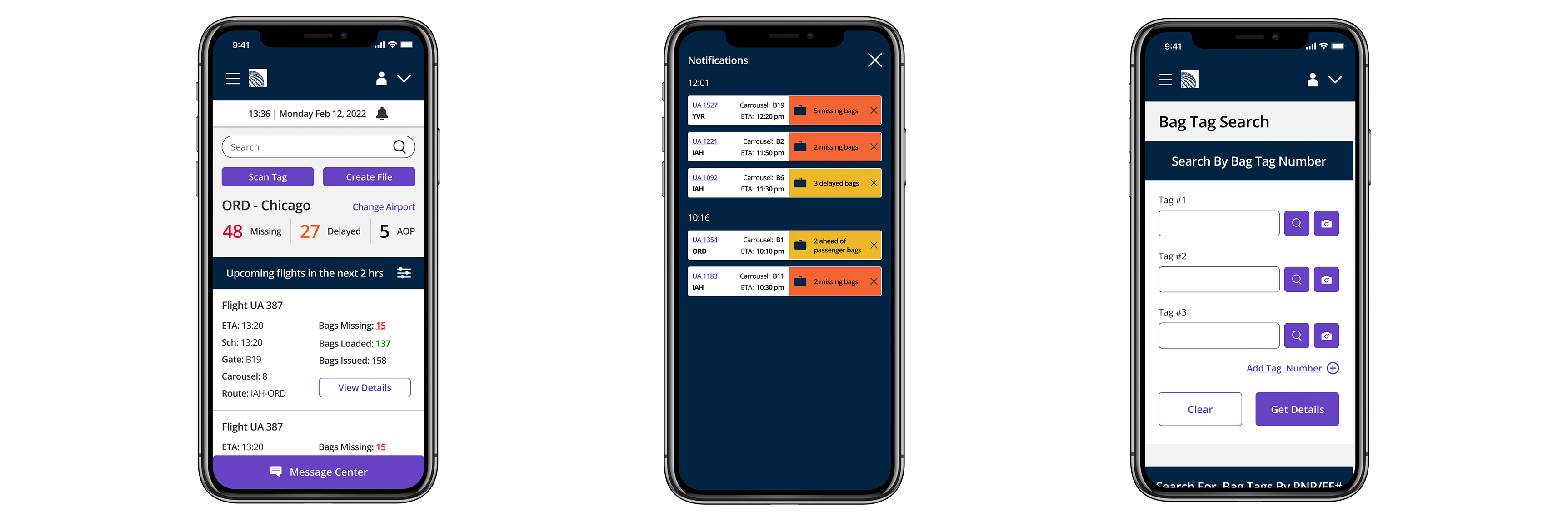
uggested optimizations in baggage handling processes to eliminate bottlenecks and enhance overall operational efficiency.
Proposed the integration of communication platforms to facilitate real-time information exchange between airport staff and call center representatives.
Advocated for the implementation of a centralized information sharing framework to break down silos and ensure consistency in passenger communication.
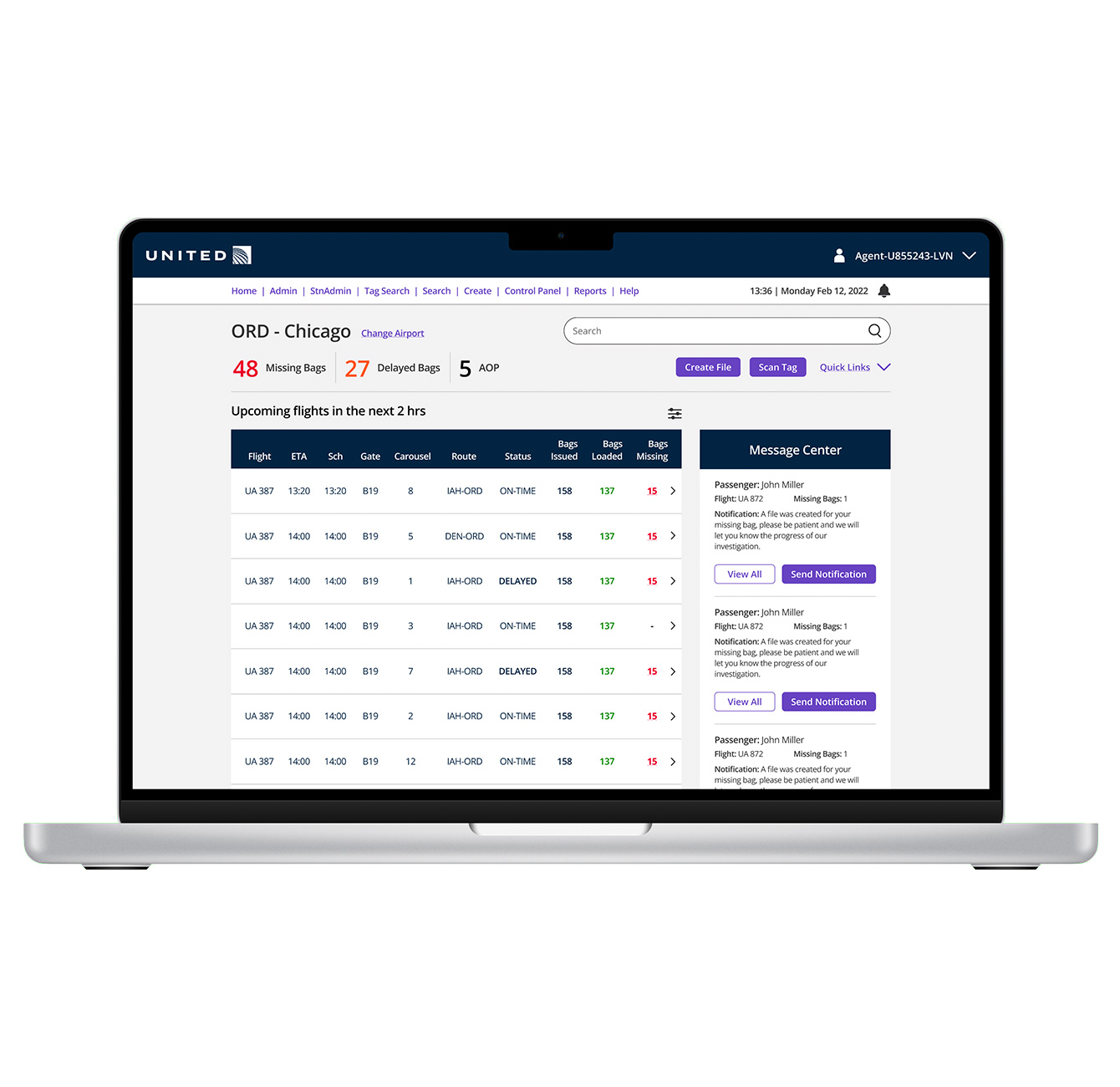
The proposed solutions aimed at operational streamlining, improved communication, and enhanced information sharing had a positive impact on baggage handling efficiency. United Airlines experienced reduced delays, improved communication between departments, and enhanced customer satisfaction.
The Collabera Inc. - United Airlines Baggage Transformation Project exemplifies the power of collaborative discovery partnerships. By leveraging UX design methodologies and engaging with subject matter experts and frontline employees, actionable solutions were proposed to address complex challenges. This partnership showcased the potential for technology and design to enhance operational efficiency and improve the overall travel experience for United Airlines passengers. The project serves as a testament to the positive outcomes achievable through collaborative efforts between technology partners and industry leaders.
Contact me to schedule a live demo with further details of my work and download my resume by clicking on the button below.
Download my Resume